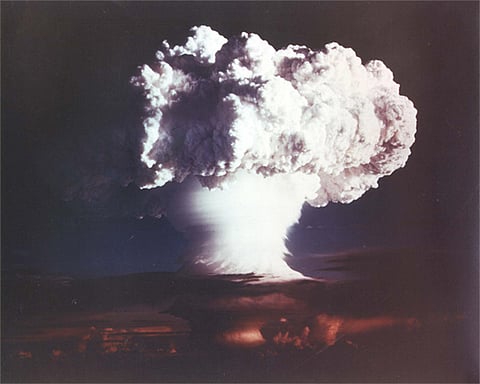

China has reportedly detonated a non-nuclear hydrogen bomb in a development that could signal major advances in its military technology. According to a report by the South China Morning Post on Sunday, the weapon was detailed in a study published last month in the Journal of Projectiles, Rockets, Missiles and Guidance, a Chinese military research publication.
The device, developed by the China State Shipbuilding Corporation (CSSC), weighs approximately 2 kilograms (4.4 pounds) and contains magnesium hydride as its key explosive component. Upon detonation, the bomb generated a fireball exceeding 1,000 degrees Celsius (1,832 degrees Fahrenheit), which the study claims lasted 15 times longer than a comparable TNT explosion. However, the blast force was only about 40% of that produced by TNT.
Though the article did not specify any planned military deployment, it noted the weapon’s potential utility against high-value targets. The journal described the bomb as capable of producing “uniform destruction of targets across vast areas,” citing the comments of CSSC scientist Wang Xuefeng.
Earlier this year, China inaugurated a new facility in Shaanxi province capable of producing 150 tons of magnesium hydride annually. This capacity follows the recent development of a cost-effective method for producing the compound, making large-scale production of such weapons more feasible than ever before.
The report comes amid speculation over China’s nuclear ambitions. Although China currently holds an estimated 600 nuclear warheads, a December Pentagon report revealed that Beijing aims to increase its arsenal to at least 1,000 warheads by 2030, reflecting a shift in its view of what constitutes a sufficient nuclear deterrent.